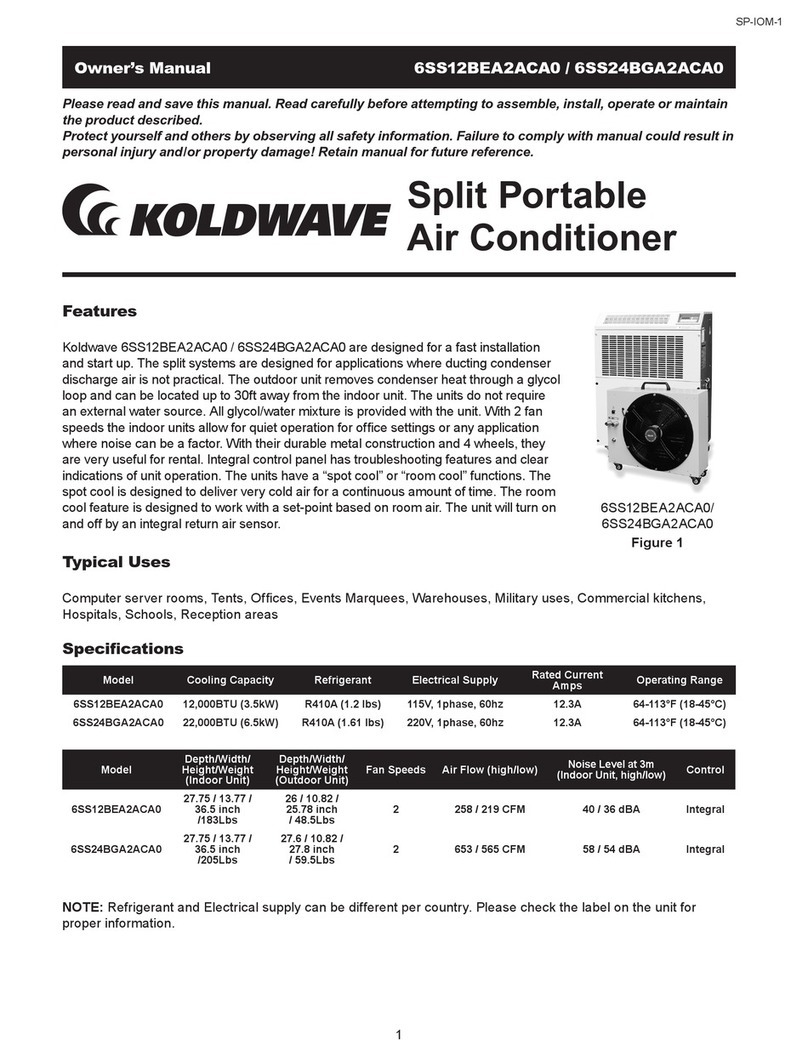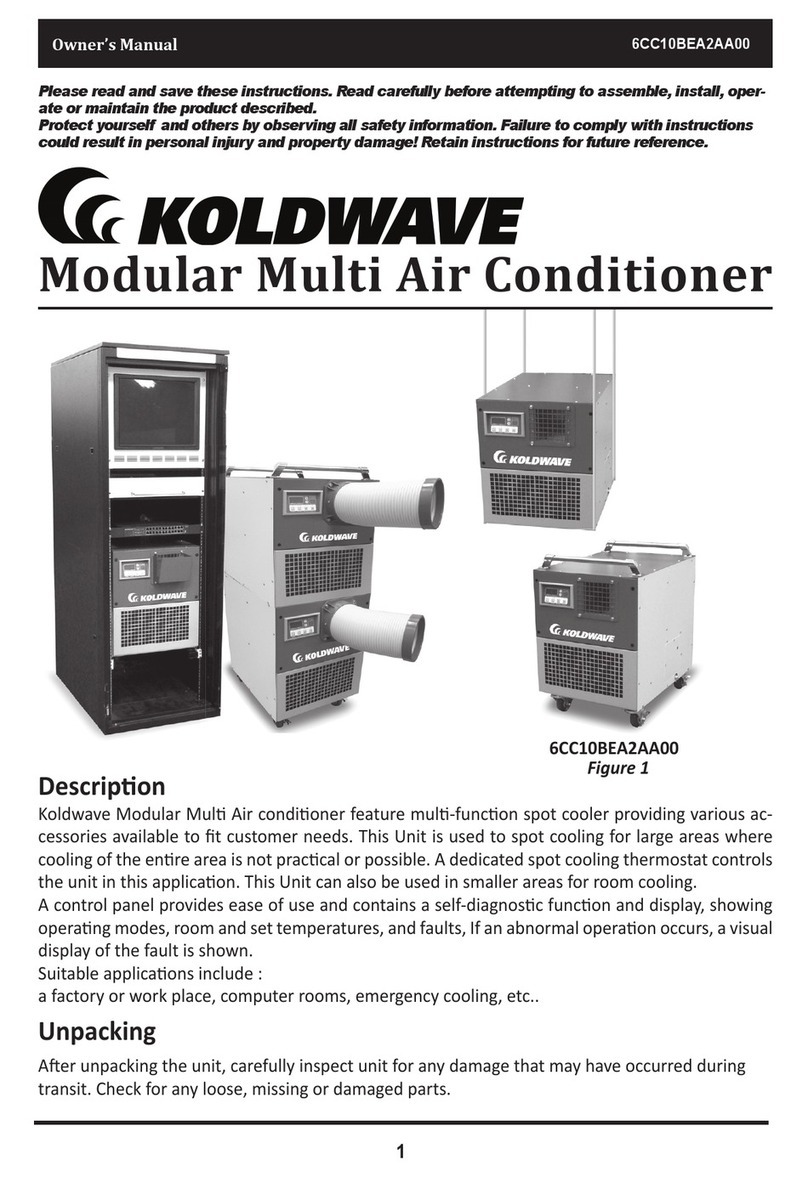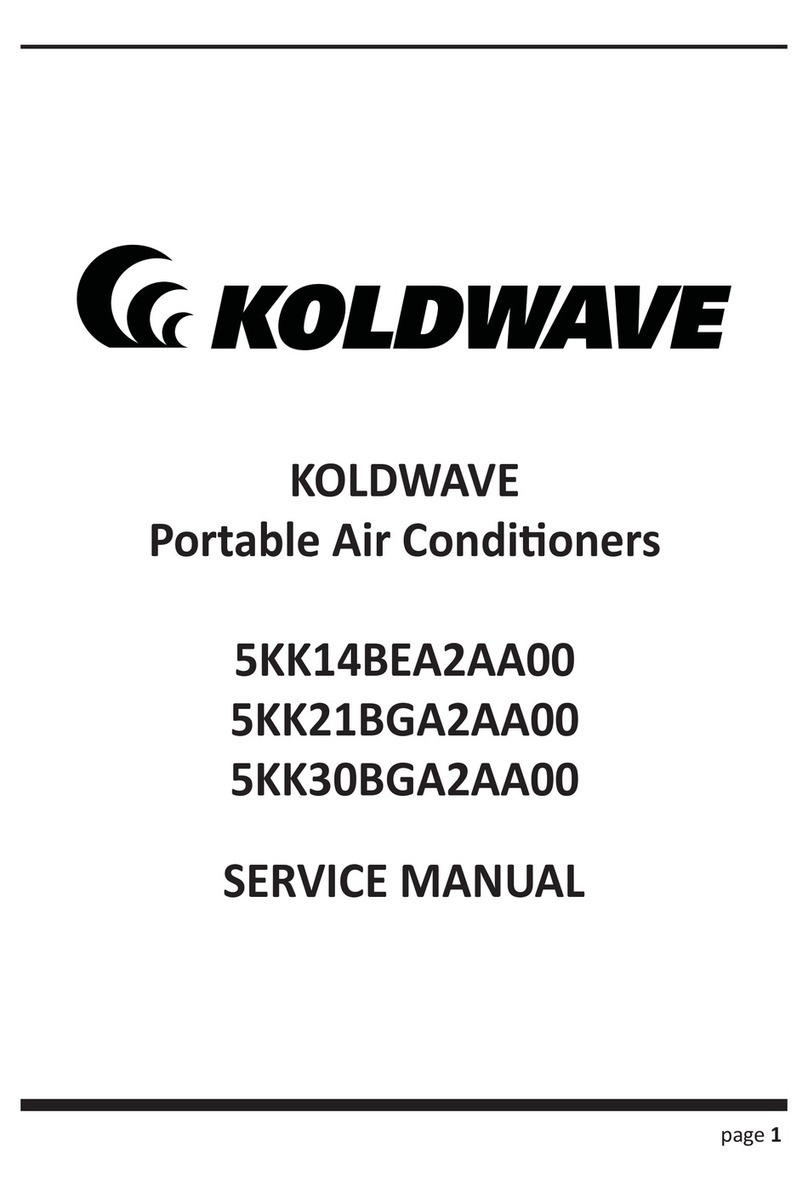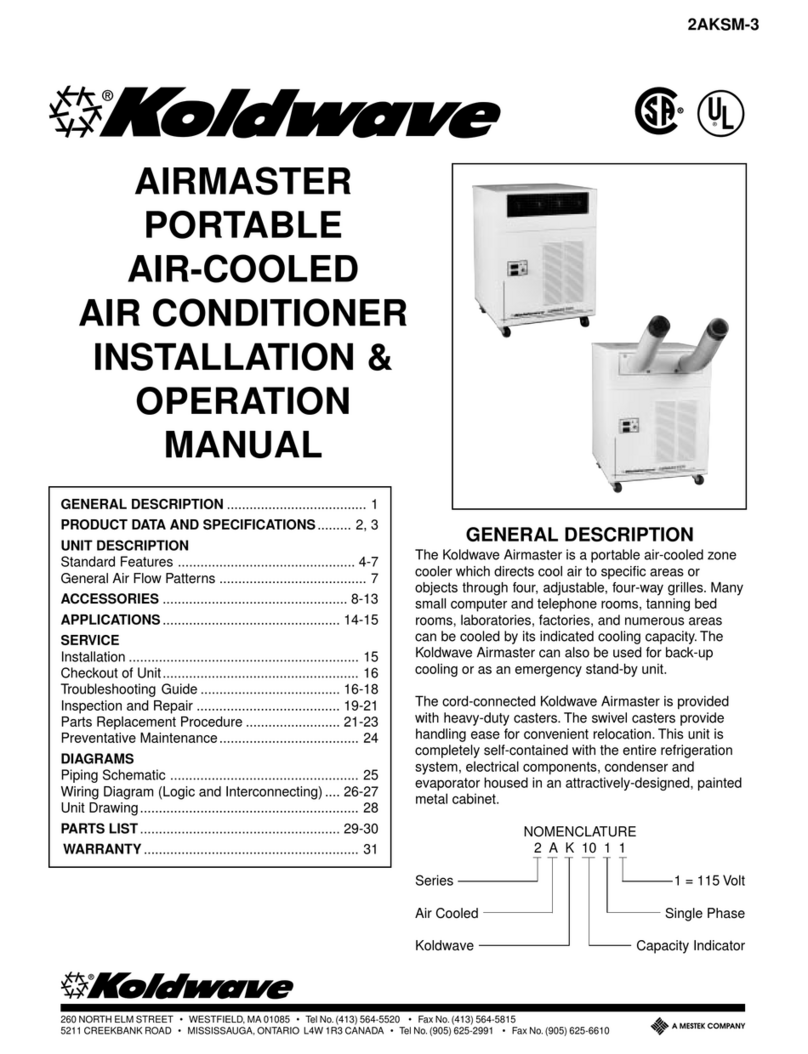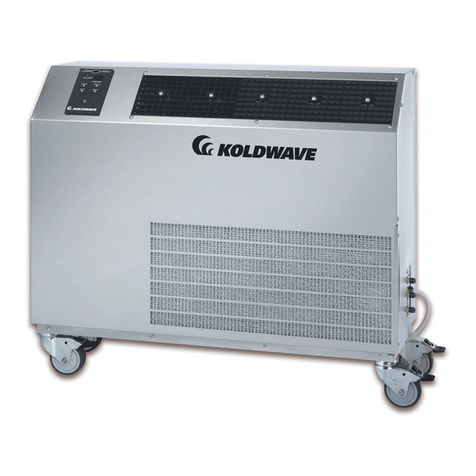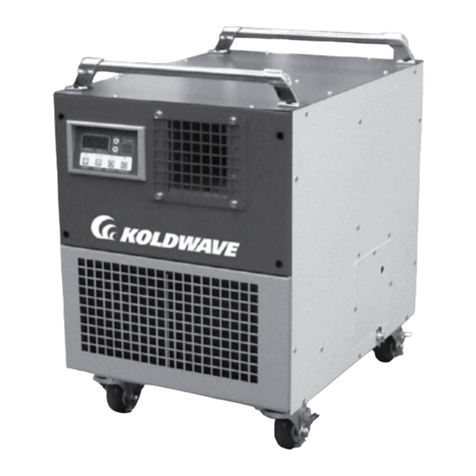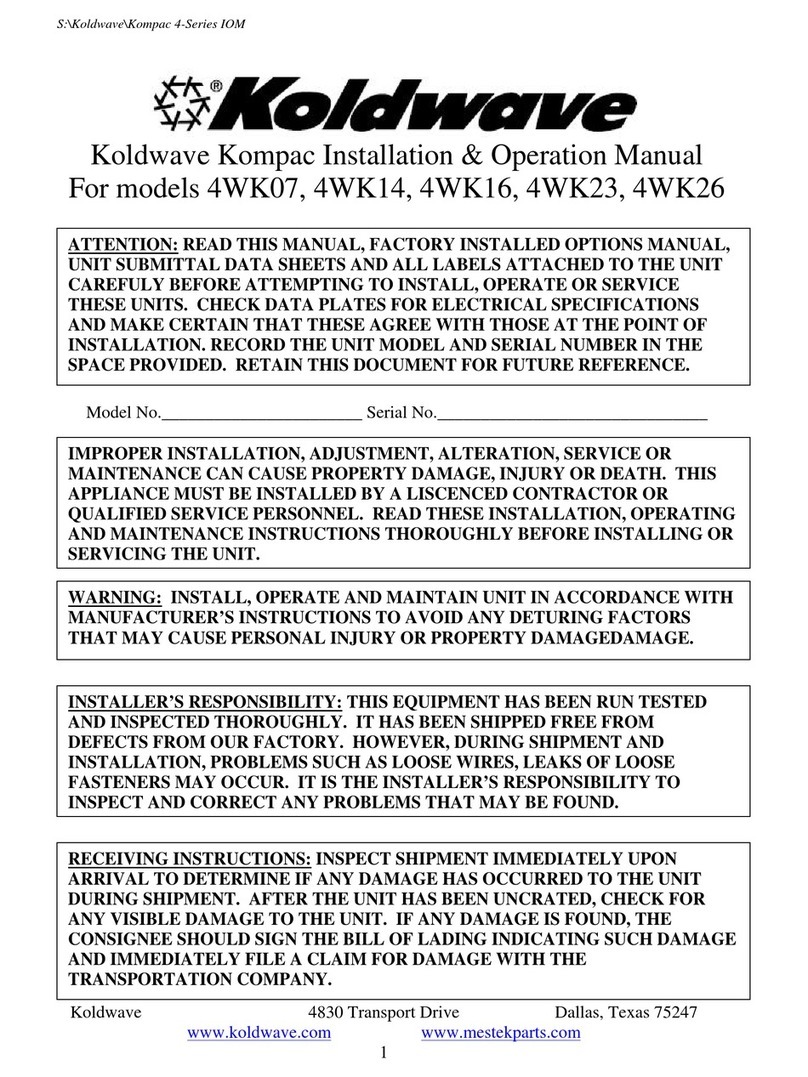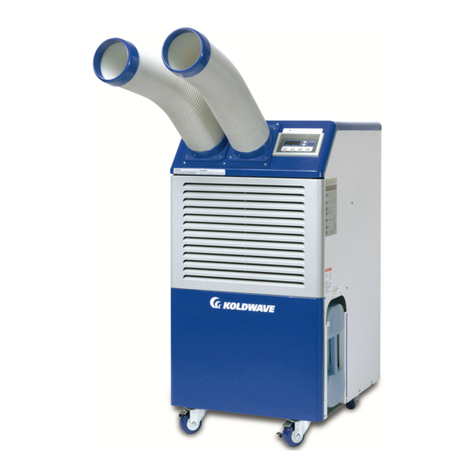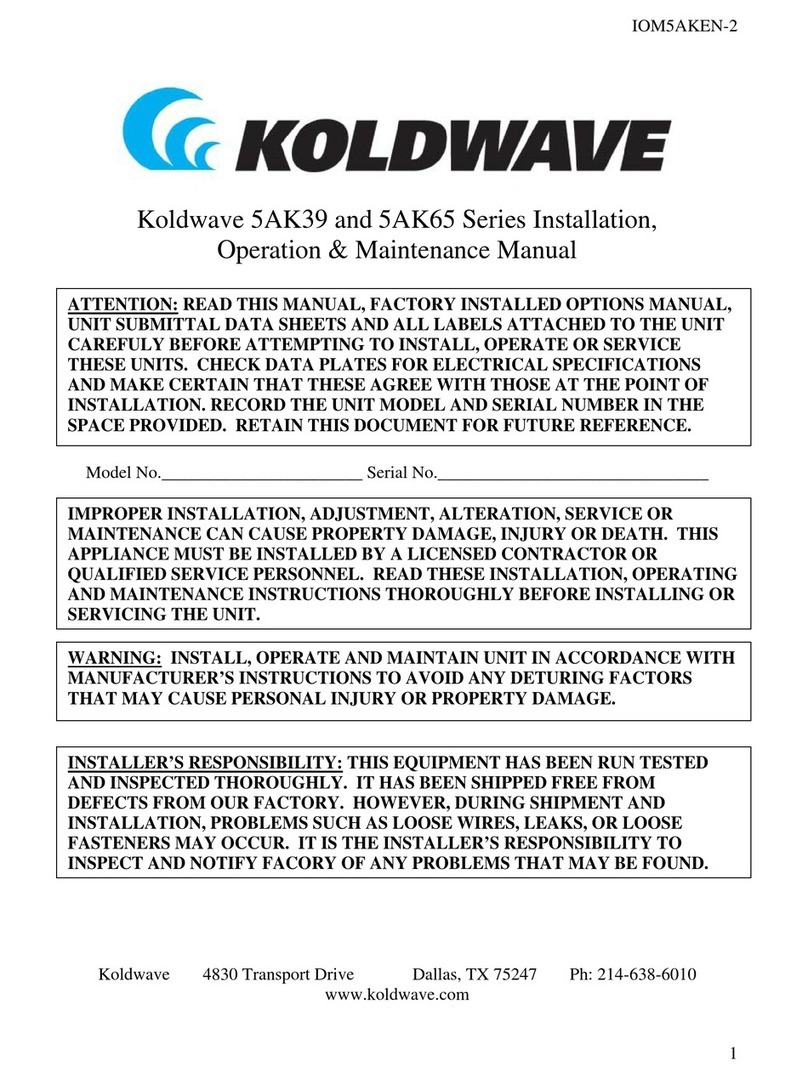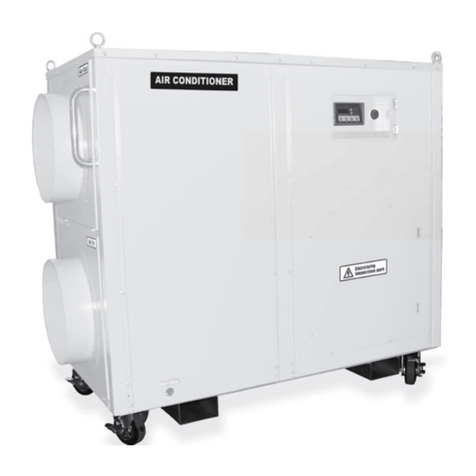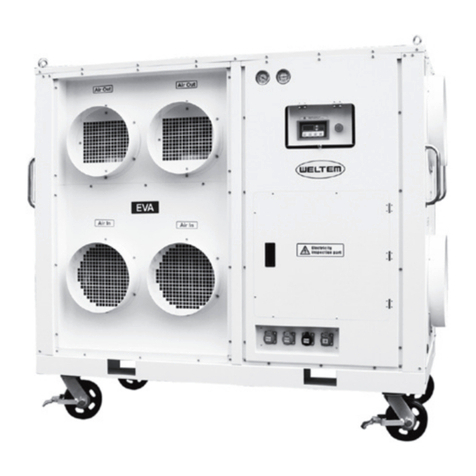
Subject to change without notice. 8KWV-20G*ATA**
REV — 02/26/20
bearing wear and a loose belt can cause slippage.
If the two legs of the belt are pressed in, midway
between the pulley and the sheave, and results
in 1” to 1-1/2” of movement, the belt is tensioned
properly. Belt tension can be adjusted by means
of the adjusting bolt, which requires loosening a
nut to move the motor to change belt position.
Filter Maintenance
If the unit has disposable lters, inspect at least
once a month and change as required. Access to
the disposable lter is gained through the return
air grille.
The unit may also contain optional cleanable
lter(s) installed in the evaporator return air
section. The return air grille must be removed to
gain access to the lters. Check lters every few
weeks to verify that the lters are clean.
After a period of use, dirt, lint, and the original water
soluble adhesive coating are easily removed by
simply ushing the lter in a stream of water.
Apply a new coating of adhesive, such as RP Super
Filter Coat, to restore the lter characteristics.
FRESH AIR DAMPER - OPTIONAL
This unit is supplied with an optional fresh air slide
damper. The fresh air is introduced AFTER the
DX coil, and is not conditioned.
refrigerant pressures. If the refrigerant pressure
falls below 70 PSIG, the switch will open causing
the compressor to shut off. As the pressure starts
to rise above 100 PSIG, the switch will reset and
allow the compressor to restart.
Thermostat
The unit has a digital thermostat for one stage
of cooling refer to the appendix at the end of the
manual for operating instructions.
Time Delay (TD) – Compressor Short Cycling
Single Phase units have a time delay relay that
delays the start of the compressor for 5 minutes
when there is a call for cooling. Each single phase
unit must have a time delay relay for compressor
short cycling to prevent immediate restart after a
brief operating period. If the compressor tries to
restart due to constant space loading, mechanical
loading due to un-equalized refrigerant system
pressure would prevent the compressor from
operating and over a period of time, could cause
premature failure of the compressor. When the
compressor becomes mechanically bound due to
un-equalized pressures, the motor windings heat
up which cause the compressor to trip on thermal
overload.
REFRIGERATION SYSTEM COMPONENTS
Compressor
The compressor is scroll hermetic type. The
function of the compressor is to create a
differential in refrigerant pressure. It converts
low pressure, low temperature refrigerant vapor
entering the suction side of the compressor into
a high pressure, high temperature gas at the
discharge side of the compressor. The function
of the compressor also pumps the refrigerant
through the piping and components within the
refrigeration system.
Condenser Coil
The condenser receives the high-pressure high-
temperature gas from the compressor after it
passes through the vibration eliminator. As the
condenser blower draws the ambient air across
the ns and tubes of the condenser coil and
the high-pressure high-temperature gas enters
the condenser coil, the gas starts to condense
back into liquid state. At the outlet piping of the
condenser coil, the gas has been turned back into
liquid refrigerant and ows toward the receiver.
Evaporator Coil
As the liquid refrigerant passes through the
expansion valve, the liquid refrigerant’s pressure
is regulated downward. This signicant change
